*NURSING > QUESTIONS & ANSWERS > AGNP BOARD EXAM QUESTIONS Orthopedics Assessment 2020/2021_317 Questions With Answers And Rationale (All)
AGNP BOARD EXAM QUESTIONS Orthopedics Assessment 2020/2021_317 Questions With Answers And Rationale
Document Content and Description Below
AGNP BOARD EXAM QUESTIONS Orthopedics Assessment (317 Questions). Question: The axioscapular group of muscles include which one of the following? Supraspinatus Trapezius Correct Subscapularis Pe... ctoralis major Explanation: The axioscapular group attaches the trunk to the scapula and includes the trapezius, rhomboids, serratus anterior, and levator scapulae. The scapulohumeral group of muscles extends from the scapula to the humerus and includes the muscles inserting directly on the humerus. This group includes the supraspinatus, infraspinatus, teres minor, and subscapularis. The axiohumeral muscle group attaches the trunk to the humerus and includes the pectoralis major and minor, and the latissimus dorsi. Question: An example of a cartilaginous joint would be the: vertebral bodies of the spine. Correct skull. shoulder. knee. Explanation: Vertebral bodies of the spine and the pubic symphysis of the pelvis are examples of cartilaginous joints. Examples of synovial joints include the shoulder, knee, hip, wrist, distal radioulnar, elbow, and carpals. The skull is an example of the fibrous joint. Question: The part of the ulna that forms the outer prominence of the elbow is referred to as the: olecranon bursa. olecranon fossa. olecranon process. Correct olecranon. Explanation: The part of the ulna that forms the outer prominence of the elbow is referred to as the olecranon process. This process fits into the fossa of the humerus when the arm is extended. Question: To assess muscle tone in the legs, support the patient's thigh with one hand, grasp the foot with the other, and: extend the patient's feet. flex and extend the patient's knee and ankle on each side. Correct have the patient try to lift the foot.feel for jerkiness in the calf. Explanation: To assess muscle tone in the legs, support the patient's thigh with one hand, grasp the foot with the other, and flex and extend the patient's knee and ankle on each side noting for any resistance to the movements. Question: When grading muscle strength, a grade of three would indicate: no muscular contraction detected. barely detectable trace of contraction. active movement of the body part with gravity eliminated. active movement against gravity. Correct Explanation: A grade of three would indicate active movement against gravity. Zero muscular strength would indicate no muscular contraction was noted on exam. A grade of one indicates a barely detectable trace of contraction noted on exam. For active movement of the body part with gravity eliminated, a grade of two would be noted. Question: Joints in which bones have intervening layers of fibrous tissue or cartilage holding the bones together are referred to as: cartilaginous joints. synovial joints. fibrous joints. Correct extra-articular joints. Explanation: Fibrous joints, such as the sutures of the skull, have intervening layers of fibrous tissue or cartilage holding the bones together. The bones are almost in direct contact and do not allow movement. Cartilaginous joints, such as those between vertebrae and the symphysis pubis, are slightly movable. In these joints, fibrocartilaginous discs separate the bony surfaces. Joints in which bones do not touch each other, and the joint articulations are freely moveable (within the limits surrounding ligaments) are called synovial joints. Extra-articular refers to the structures of selected regions of the joint and types of movement. Question: Passive flexion, varus stress, and external rotation of the lower leg evaluates the: medial meniscus. Correct lateral meniscus. lateral collateral ligament (LCL). posterior cruciate ligament (PCL). Explanation: Passive flexion, varus stress, and external rotation of the lower leg evaluates the medial meniscus.Question: When examining the knee, the presence of a palpable fluid wave with the returning fluid wave into the suprapatellar pouch is noted. This positive sign for effusion of the knee is known as the: balloon sign. Correct bulge sign. balloting sign. McMurray's sign. Explanation: A positive balloon sign for effusion in the knee is the presence of a palpable fluid wave with a returning fluid wave into suprapatellar pouch. When examining the knee, a fluid wave on the medial side between the patella and the femur is noted. This positive sign for effusion is known as the bulge sign. Balloting of the patella is tested by compressing the suprapatellar pouch and pushing the patella sharply against the femur. If fluid returns to the suprapatellar pouch, then an effusion of the knee is diagnosed. McMurray's test checks for tears in the medial meniscus. Question: The Abduction (or Valgus) Stress Test is a maneuver used to assess the function of the: Achilles tendon. medial meniscus. medial collateral ligament (MCL). Correct lateral collateral ligament (LCL). Explanation: The Abduction (or Valgus) Stress Test is a maneuver that evaluates the function of the medial collateral ligament. To perform this test, place the knee in thirty degrees of flexion. While stabilizing the knee, abduct the ankle. If the knee joint abducts greater than the uninjured knee, the test is positive. This is suggestive of a medical collateral ligament tear. Question: The dorsiflexors muscles in the foot include the: posterior tibial muscle. gastrocnemius. toe flexors. toe extensors. Correct Explanation: The dorsiflexors in the foot include the anterior tibial muscles and the toe extensors. Question: Thenar atrophy suggests: an ulnar nerve disorder. a median nerve disorder. Correct a radial nerve disorder. a superficial branch of the radial nerve.Explanation: Thenar atrophy suggests a median nerve disorder such as carpal tunnel syndrome. This is evidenced by muscle wasting in the palm of the hand. Question: Pouches of synovial fluid that cushion the movement of tendons and muscles over bone or other joint structures are referred to as: synovial joints. bursae. Correct joint capsule. synovial membrane. Explanation: Pouches of synovial fluid that cushion the movement of tendons and muscles over bone or other joint structures are referred to as bursae. (Bursae is plural. Bursa is singular). Question: A patient experienced a neck injury yesterday and presents to the nurse practitioner with aching paracervical pain and stiffness. Other complaints include dizziness, malaise, and fatigue. These findings may be associated with: mechanical neck pain. mechanical neck pain with whiplash. Correct cervical radiculopathy. cervical myelopathy. Explanation: In patients with mechanical neck pain with whiplash, the paracervical pain and stiffness begins the day after injury and may be accompanied by occipital headaches, dizziness, and malaise. Mechanical neck pain is described as aching pain in the cervical paraspinal muscles and ligaments with associated muscle spasm, stiffness, and tightness in the upper back and shoulder, lasting up to 6 weeks. With cervical radiculopathy, nerve root compression is the etiology. Symptoms may include sharp burning or tingling pain in the neck and one arm with associated paresthesias. In cervical myelopathy, cervical cord compression, the neck pain is associated with bilateral weakness and paresthesias in both upper and lower extremities. Question: Women who wear high-heeled shoes with narrow toe boxes are at risk of developing all of the following forefoot abnormalities except: hallux valgus. metatarsalgia. Achilles tendinitis. Correct Morton's neuroma. Explanation: Women who wear high-heeled shoes with narrow toe boxes are at risk of developing hallux valgus, metatarsalgia, and Morton's neuroma. Achilles tendinitis more commonly occurs in runners and affects the posterior foot as opposed to the forefoot.Question: Anserine bursitis arises from: excessive running. Correct excessive kneeling. arthritis. trauma Explanation: Anserine bursitis arises from excessive running, valgus knee deformity, fibromyalgias, and osteoarthritis. Prepatellar bursitis (“housemaid’s knee”) arises from excessive kneeling. A popliteal or “baker’s” cyst arises from distention of the gastrocnemius semimembranous bursa from underlying arthritis or trauma. Question: A 64-year-old man complains of worsening pain that radiates from the right buttock to the posterior upper thigh. This is a common complaint associated with: osteoporosis. degenerative disc disease (DDD). sciatica. Correct cauda equina. Explanation: Sciatica is characterized as a constant pain in one side of the buttock that radiates to the leg. The pain worsens while sitting. Patients with osteoporosis have no symptoms until bone fracture occurs. Degenerative disc disease (DDD) involves chronic lower back or neck pain and spasms. Cauda equina involves lower back pain, weakness, numbness of lower extremities, and possible loss of bladder control. Question: The ankle is a hinge formed by the tibia, fibula, and the: Achilles tendon. talus. Correct deltoid ligament. calcaneus. Explanation: The ankle is a hinge formed by the tibia, fibula, and the talus. The tibia and fibula act as a mortise, stabilizing the joint while bracing the talus like an inverted cup. Question: The group of muscles that lies medial and swings the thigh toward the body is known as the: abductor group. extensor group. flexor group. adductor group. Correct Explanation:The group of muscles that lies medial and swings the thigh toward the body is known as the adductor group. The group of muscles that lies laterally and swings the thigh away from the body is known as the abductor group. The group of muscles that lies posteriorly and extends the thigh is known as the extensor group. The group of muscles that lies anteriorly and flexes the thigh is known as the flexor group. Question: When examining the elbow for range of motion, the nurse practitioner instructs the patient to turn his palm upward. This motion is an example of: extension. flexion. supination. Correct pronation. Explanation: Instructing the patient to turn his palm upward is supination. Extension occurs with straightening the elbow. Flexion occurs with bending the elbow. Turning the palms downward demonstrates pronation. Question: The adductor tubbercle of the knee is located: lateral surface. medial surface. Correct anterior surface. posterior surface. Explanation: The adductor tubercle of the knee is located on the medial surface of the knee. Question: A patient complains of low back pain when he walks, but improvement with rest or lumbar flexion. This type of low back pain is referred to as: radicular low back pain. mechanical low back pain. sciatica. pseudoclaudication. Correct Explanation: Lumbar spinal stenosis or "pseudoclaudication" refers to pain in the back or legs where the patient walks but improves with rest, lumbar flexion, or both. Radicular pain, or sciatica, presents with shooting pains below the knee, into the lateral leg or posterior calf. It may be accompanied by paresthesias and/or weakness in the affected leg. Mechanical low back pain often arises from muscle and ligament injuries (~70%) or agerelated intervertebral disc or facet disease. Common symptoms include aching pain in the lumbosacral area that radiates to the upper leg. Common risk factors include heavy lifting, poor conditioning, and obesity. Question:When examining the foot of a patient, the nurse practitioner notes tenderness of the posterior medial malleolus. This could be suggestive of: [Show More]
Last updated: 1 year ago
Preview 1 out of 95 pages
Instant download

Buy this document to get the full access instantly
Instant Download Access after purchase
Add to cartInstant download
Reviews( 0 )
Document information
Connected school, study & course
About the document
Uploaded On
Aug 07, 2021
Number of pages
95
Written in
Additional information
This document has been written for:
Uploaded
Aug 07, 2021
Downloads
0
Views
35



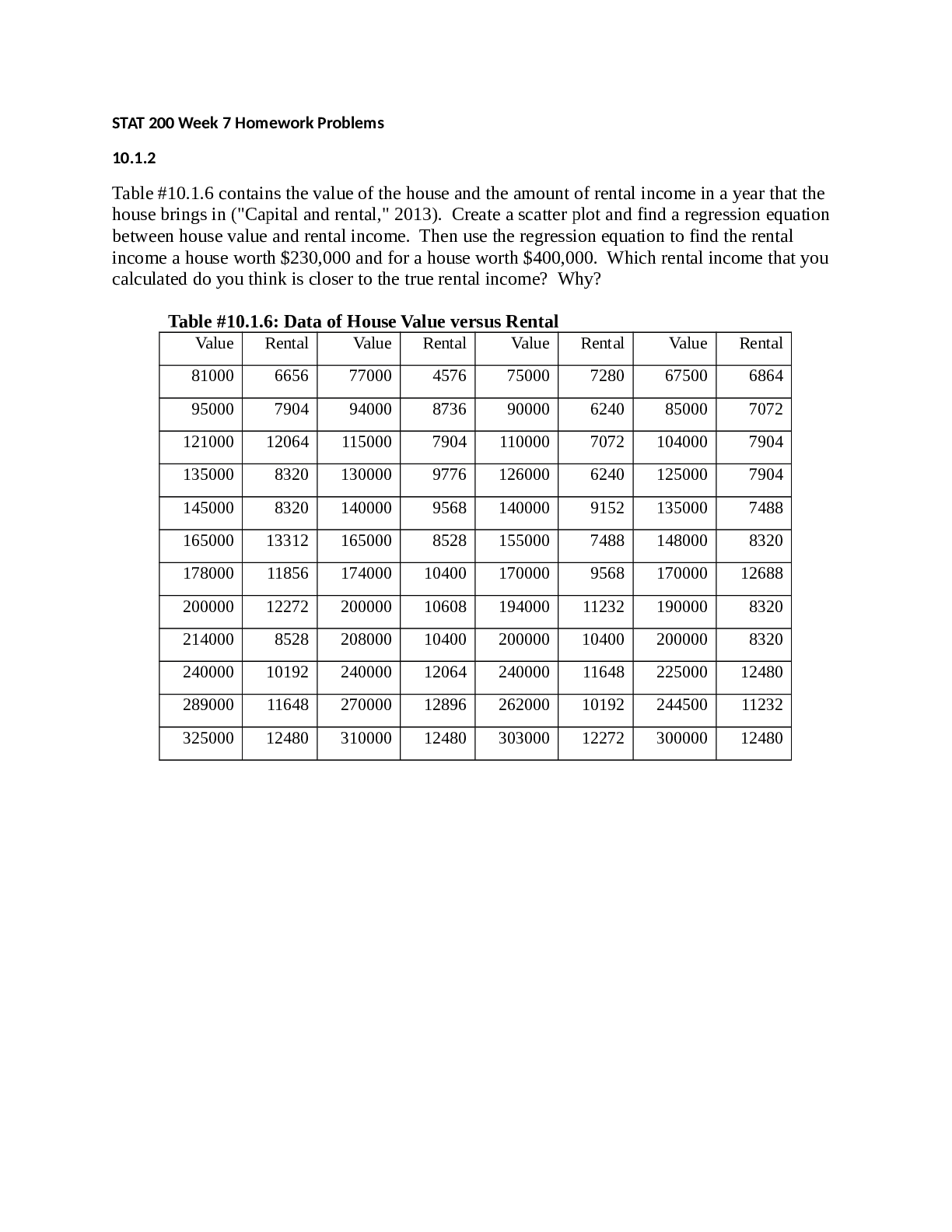
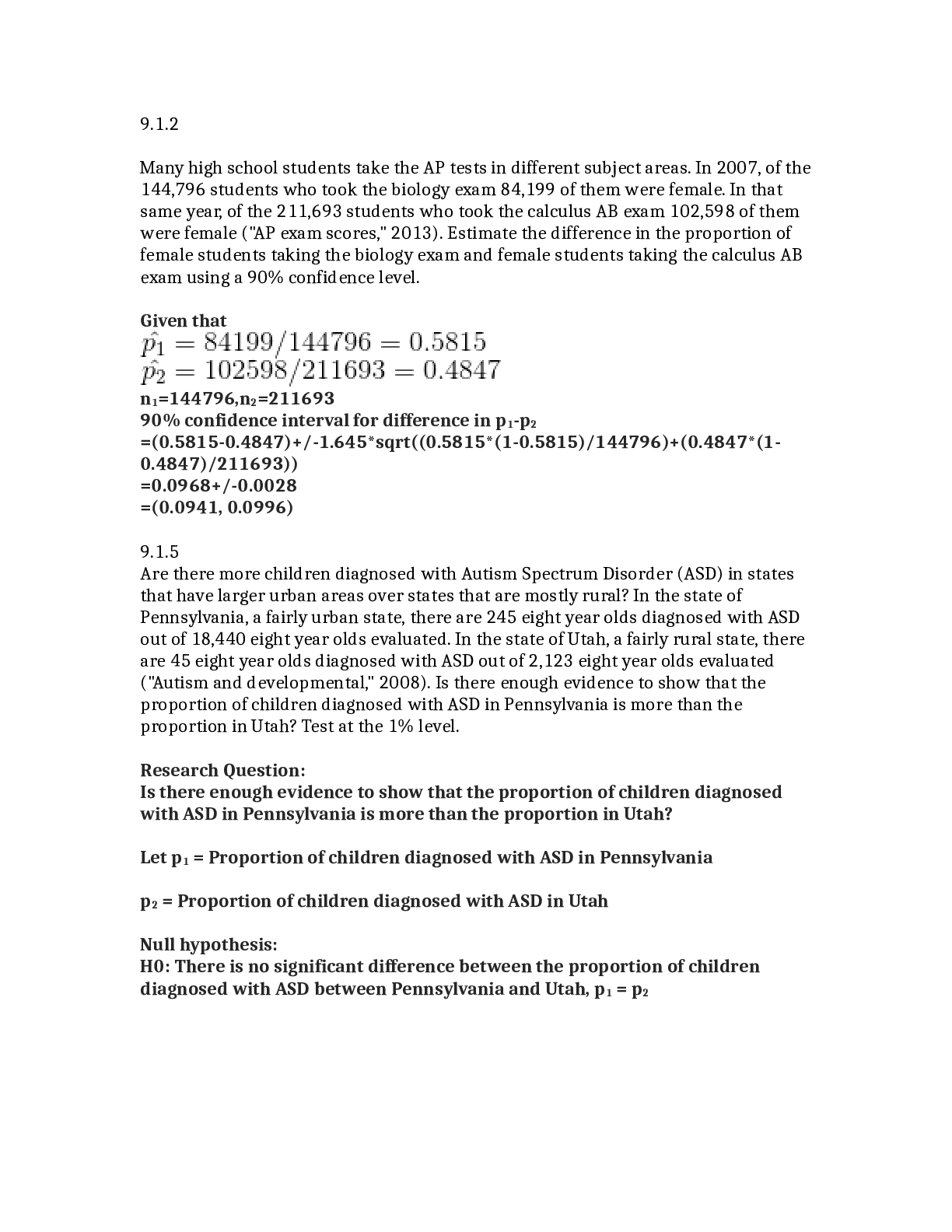
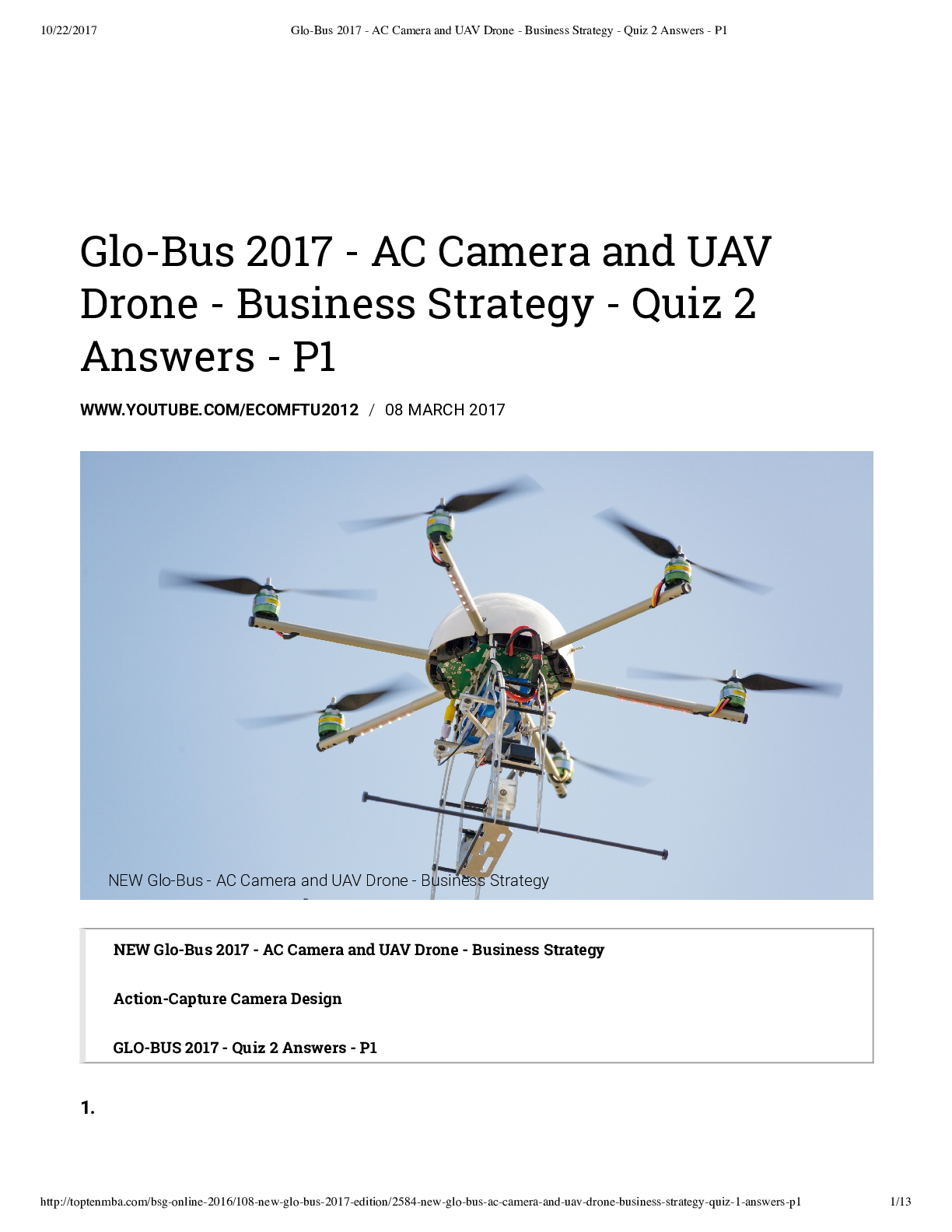


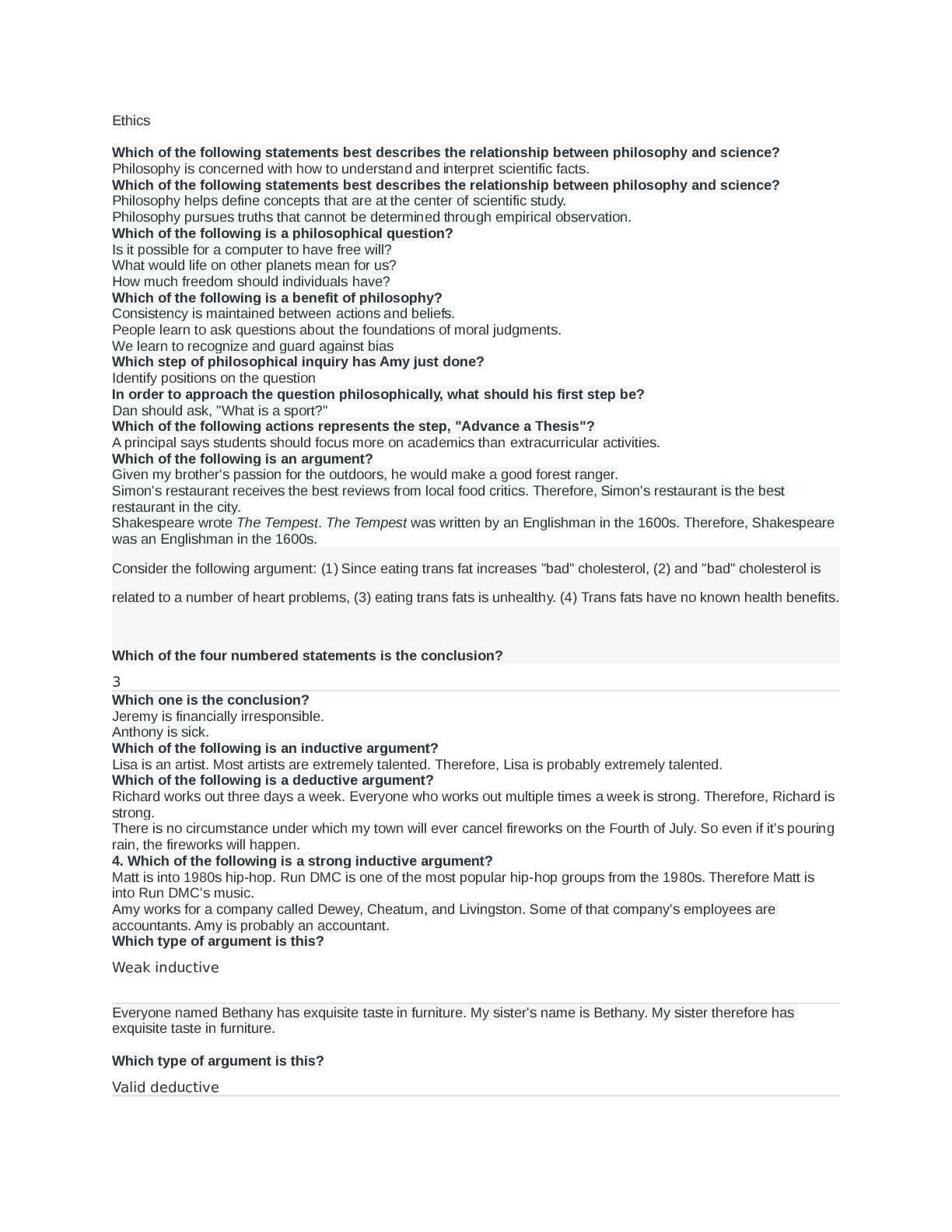

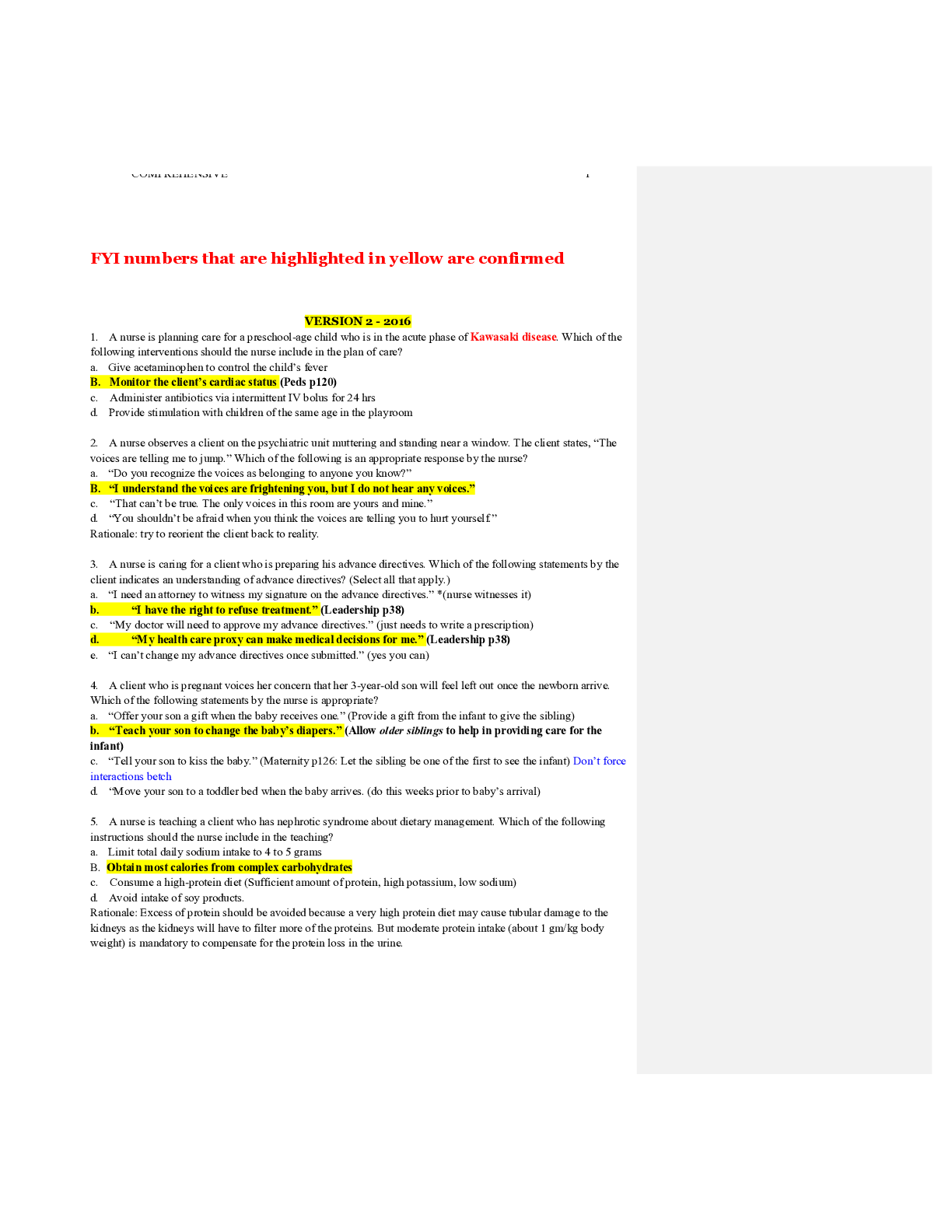
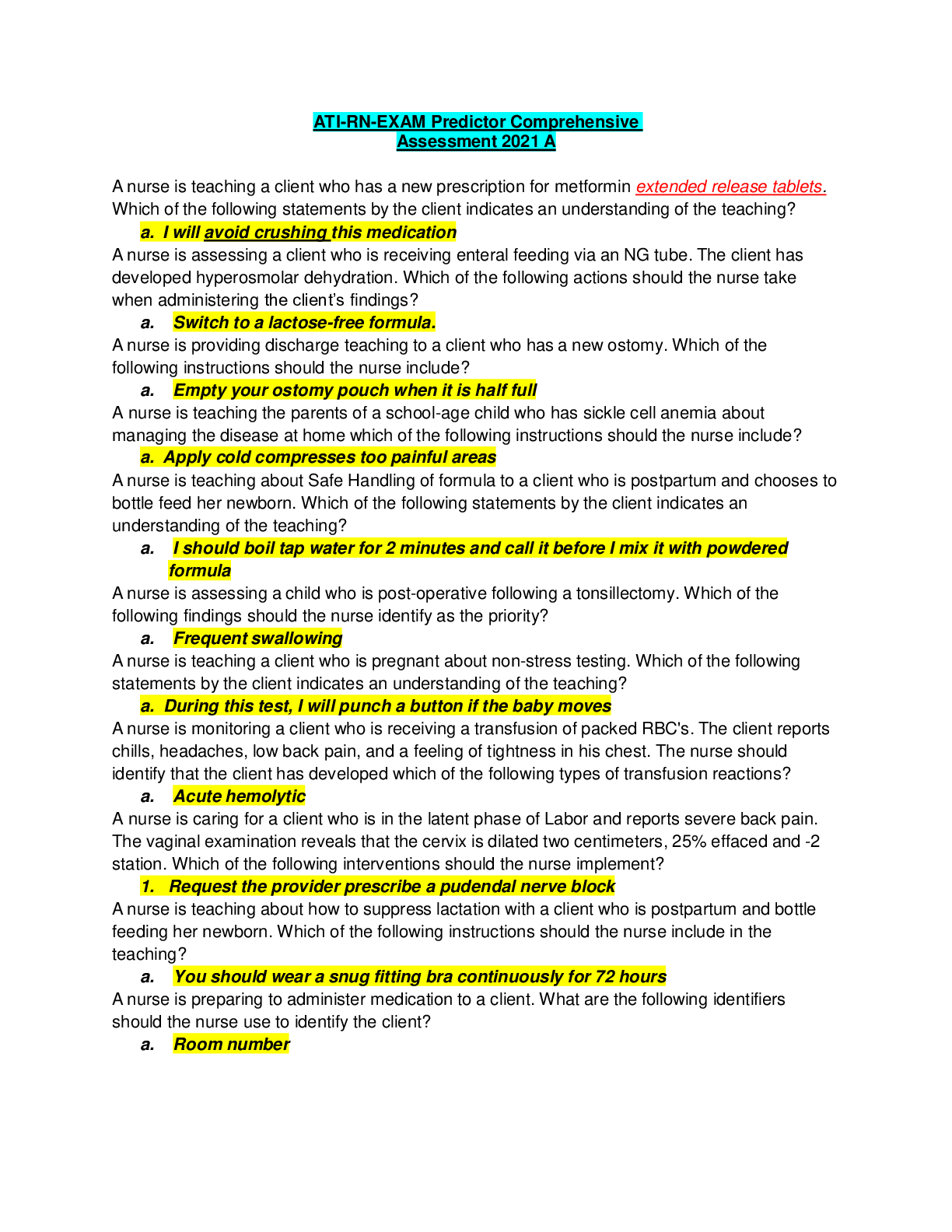

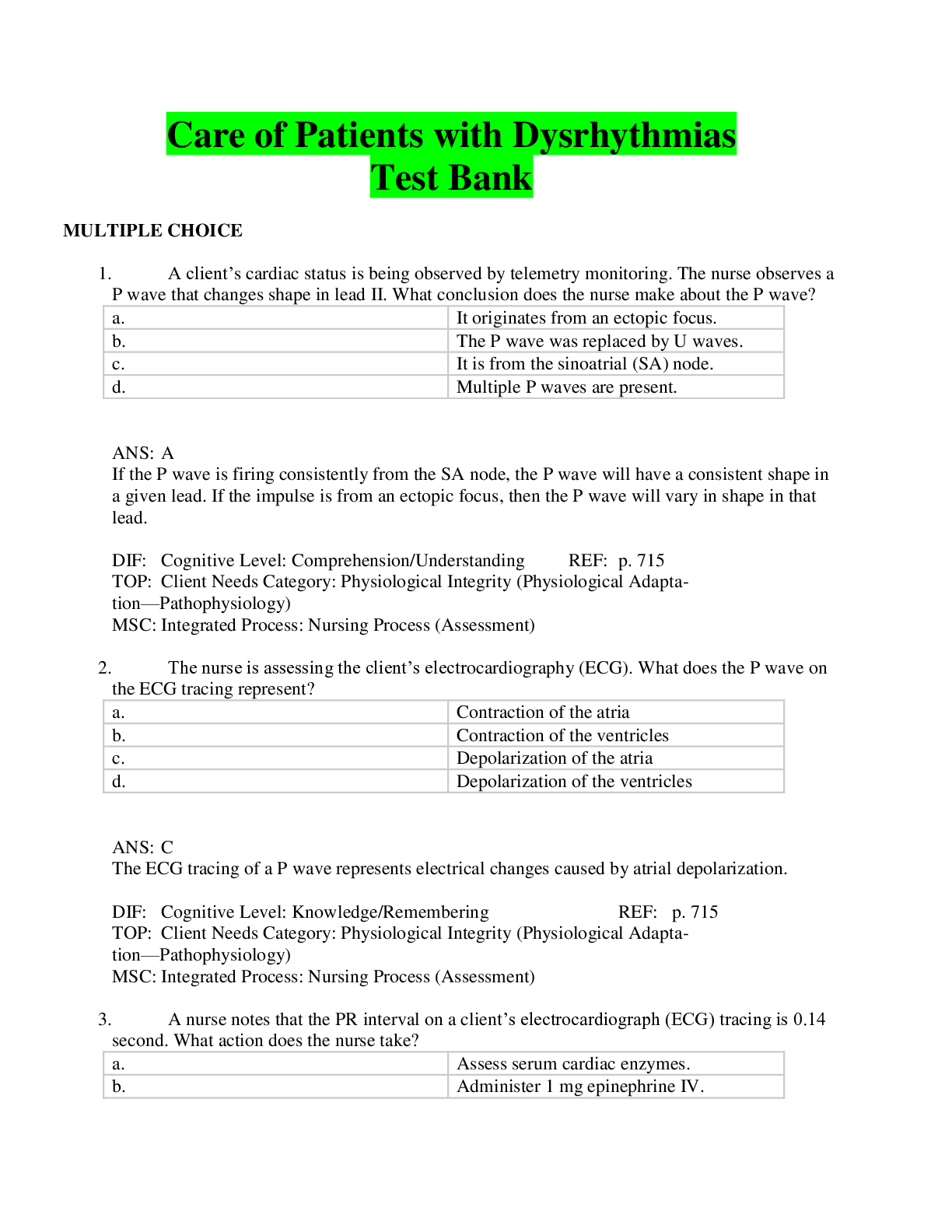

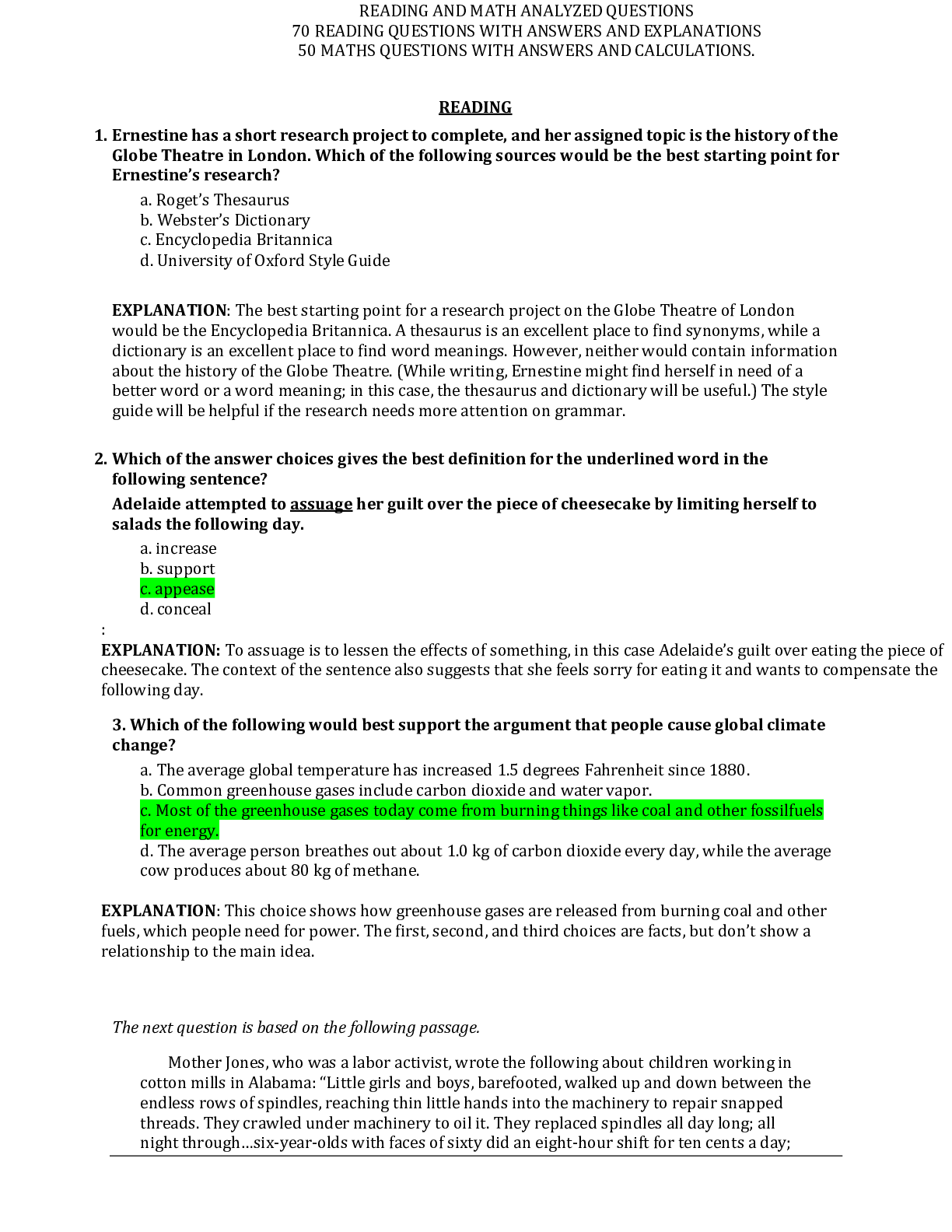

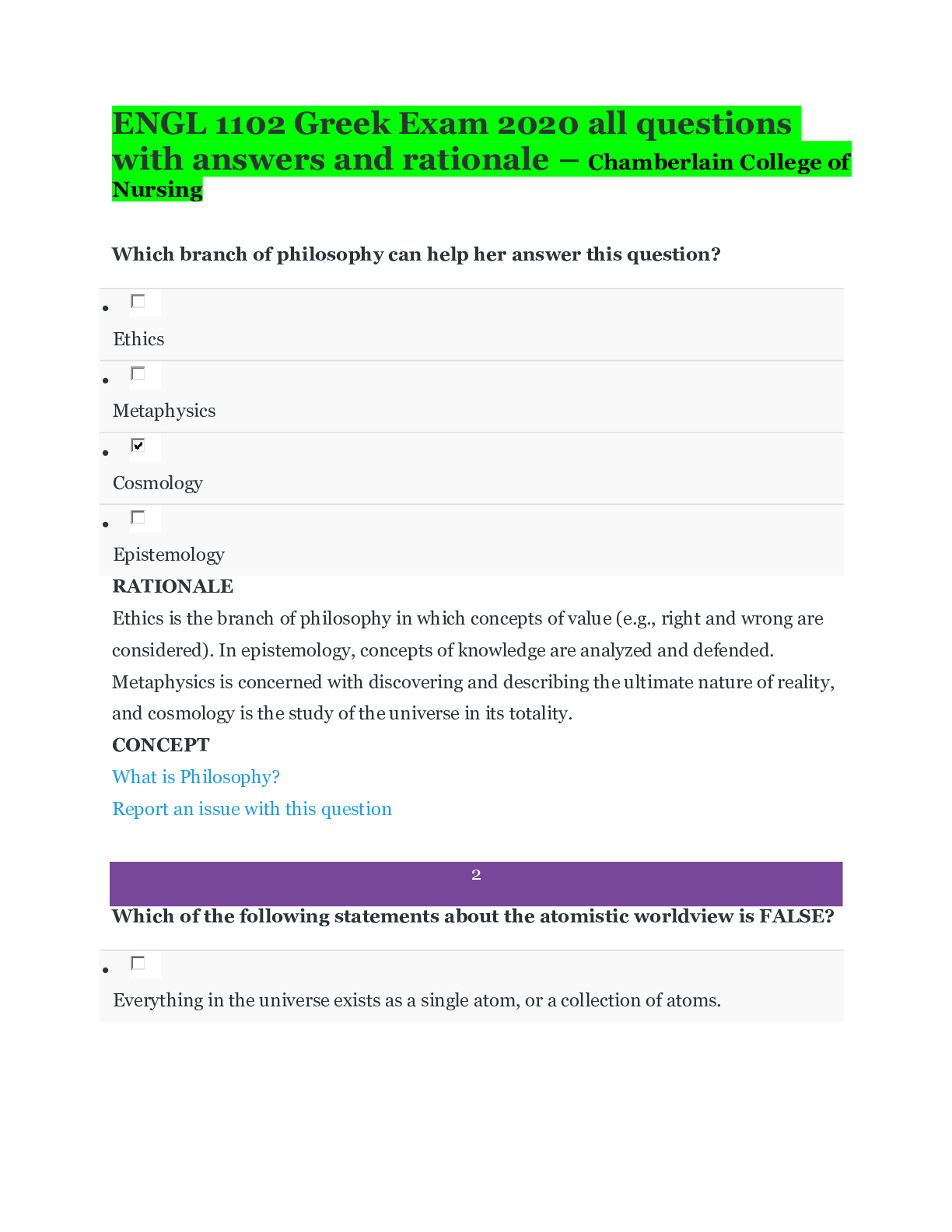
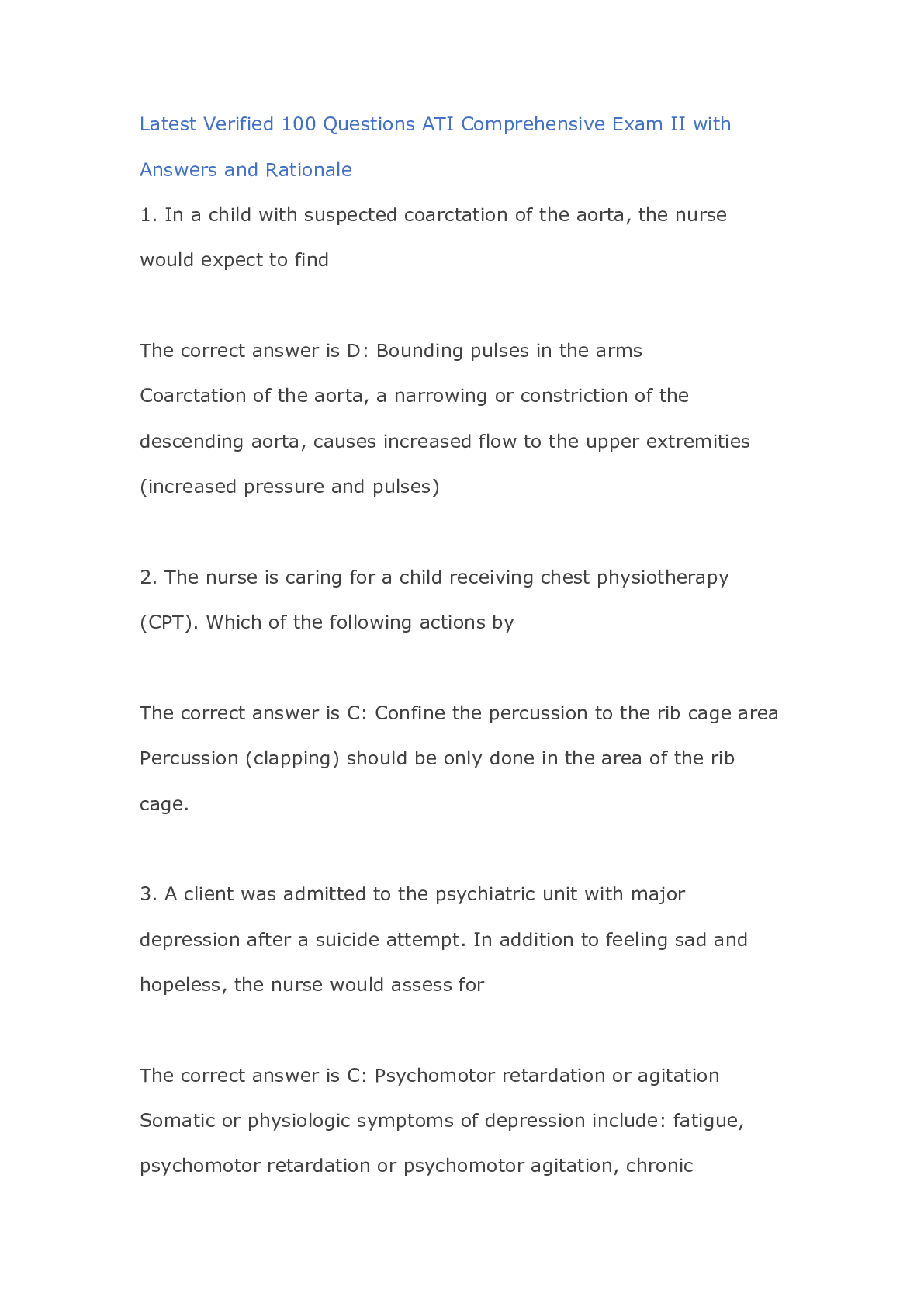
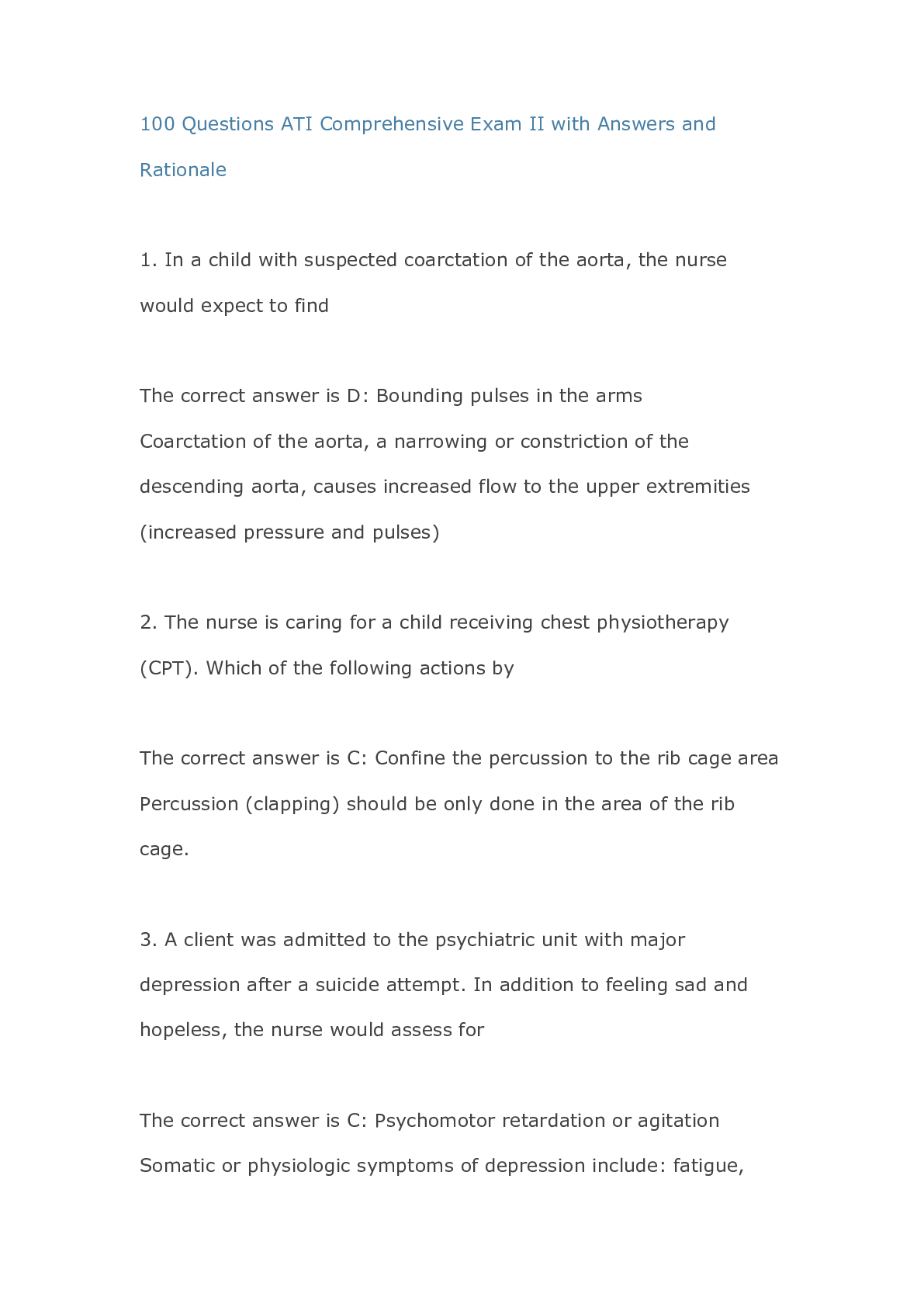
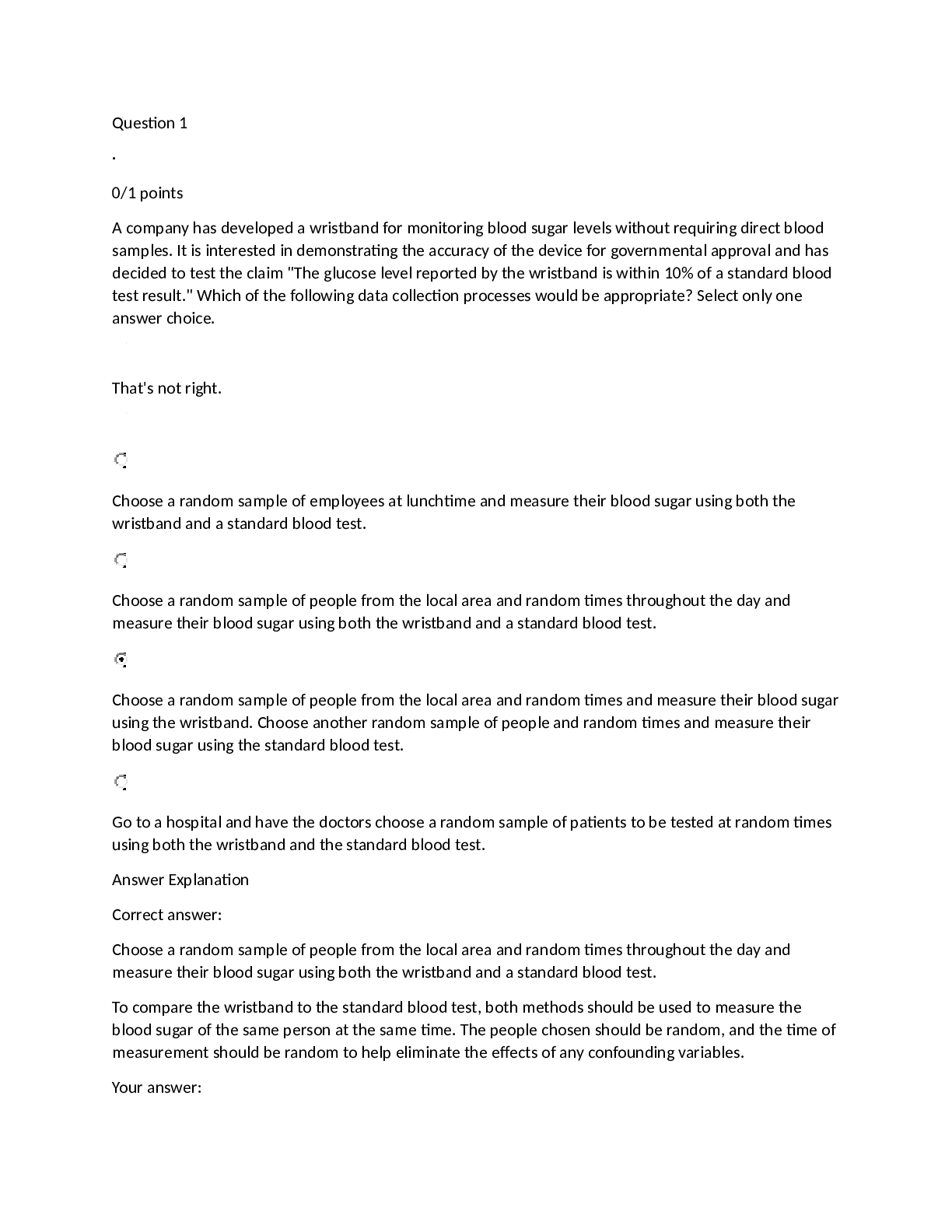
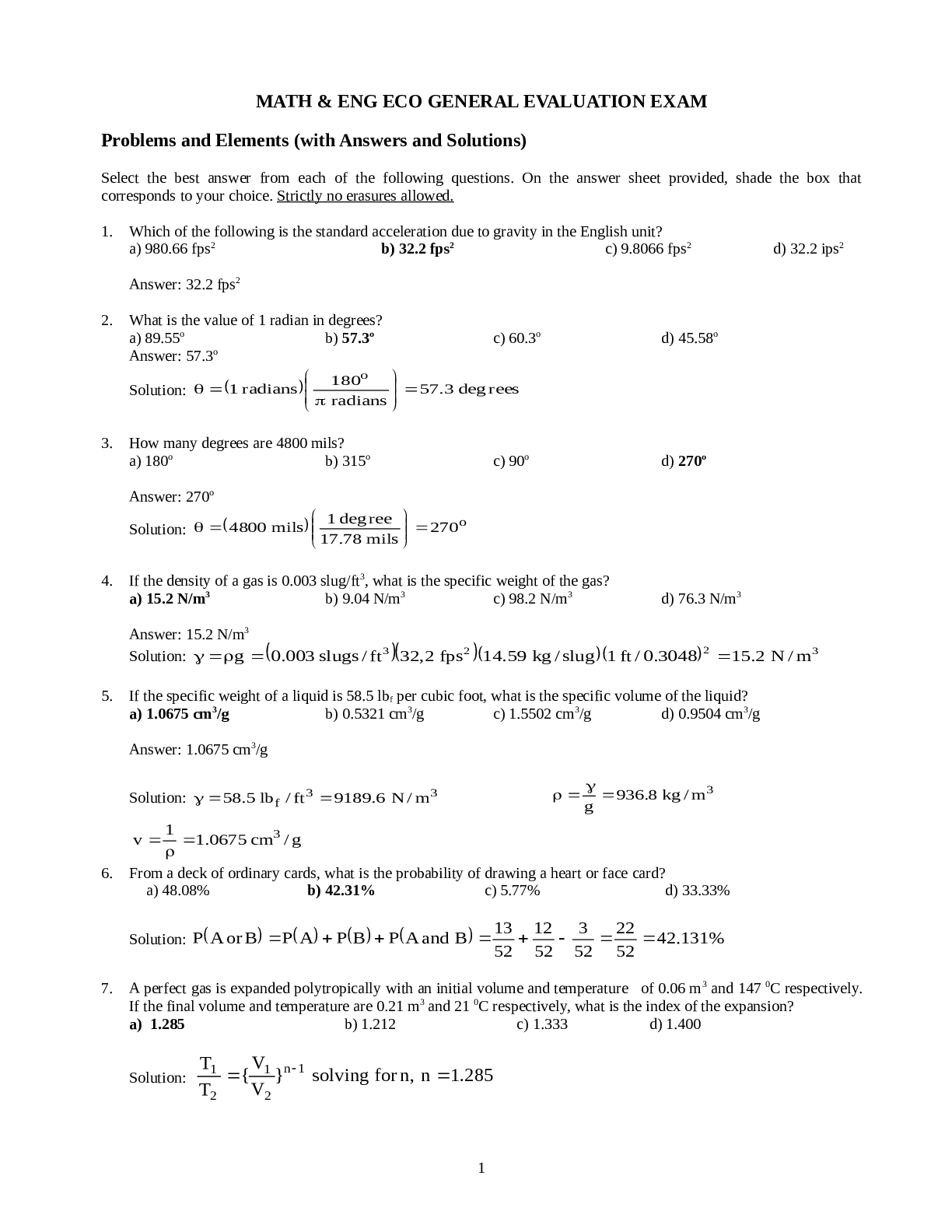
 Revised Exam Prep Guide.png)

